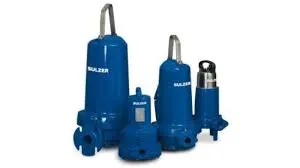English
- Afrikaans
- Albanian
- Amharic
- Arabic
- Armenian
- Azerbaijani
- Basque
- Belarusian
- Bengali
- Bosnian
- Bulgarian
- Catalan
- Cebuano
- Corsican
- Croatian
- Czech
- Danish
- Dutch
- English
- Esperanto
- Estonian
- Finnish
- French
- Frisian
- Galician
- Georgian
- German
- Greek
- Gujarati
- Haitian Creole
- hausa
- hawaiian
- Hebrew
- Hindi
- Miao
- Hungarian
- Icelandic
- igbo
- Indonesian
- irish
- Italian
- Japanese
- Javanese
- Kannada
- kazakh
- Khmer
- Rwandese
- Korean
- Kurdish
- Kyrgyz
- Lao
- Latin
- Latvian
- Lithuanian
- Luxembourgish
- Macedonian
- Malgashi
- Malay
- Malayalam
- Maltese
- Maori
- Marathi
- Mongolian
- Myanmar
- Nepali
- Norwegian
- Norwegian
- Occitan
- Pashto
- Persian
- Polish
- Portuguese
- Punjabi
- Romanian
- Russian
- Samoan
- Scottish Gaelic
- Serbian
- Sesotho
- Shona
- Sindhi
- Sinhala
- Slovak
- Slovenian
- Somali
- Spanish
- Sundanese
- Swahili
- Swedish
- Tagalog
- Tajik
- Tamil
- Tatar
- Telugu
- Thai
- Turkish
- Turkmen
- Ukrainian
- Urdu
- Uighur
- Uzbek
- Vietnamese
- Welsh
- Bantu
- Yiddish
- Yoruba
- Zulu
Telephone: +86 13120555503
Email: frank@cypump.com
Sep . 23, 2024 07:05 Back to list
septic ejector pump
Understanding Septic Ejector Pumps A Key Component in Waste Management
Septic systems are essential for homes not connected to municipal sewage systems. They rely on a series of components, one of the most crucial being the septic ejector pump. Understanding how these pumps work and their importance is fundamental for anyone looking to maintain an efficient septic system.
A septic ejector pump is designed to transport wastewater from a home’s lower level to a higher elevation for proper disposal
. This is particularly important in homes built on sloped or uneven terrain where gravity alone cannot facilitate the flow of wastewater to the main sewer line or drain field. Without an ejector pump, wastewater would accumulate, causing clogs, backups, and potentially hazardous overflow situations.The ejector pump typically resides in a sealed tank, often called a sump pit, where it collects wastewater from the home’s lower areas, such as basements or lower-level bathrooms. When the wastewater reaches a designated level, the pump is activated—usually by a float switch. The pump then works to push the wastewater through a discharge pipe and into the sewer line or drain field. This process ensures that wastewater is efficiently removed and treated, helping to prevent health hazards and environmental issues.
septic ejector pump

Regular maintenance of your septic ejector pump is essential to its longevity and effectiveness. Homeowners should routinely inspect the pump for clogs and wear. One common issue is the accumulation of debris, such as grease, solids, and flushable items that can obstruct the pump's function. It is vital to avoid flushing materials that can damage the system, including non-biodegradable products. Furthermore, conducting regular oil changes and inspections can help catch potential problems before they escalate into costly repairs or replacements.
Additionally, understanding the signs of a failing ejector pump can save homeowners from significant headaches. Typical indications include slow drains, unusual noises from the pump, and, most critically, sewer odors emanating from the basement or lower levels of the home. If you notice any of these signs, it is crucial to act quickly and consult a professional to avoid further damage to the entire septic system.
Installing a septic ejector pump is a wise investment for homeowners with specific plumbing conditions. With proper usage and maintenance, these pumps can provide years of reliable service, ensuring that your wastewater is handled safely and effectively. In conclusion, a septic ejector pump plays a vital role in maintaining a functional and efficient septic system, and understanding its importance can promote better home management practices while safeguarding your health and the environment.
-
ISG Series Vertical Pipeline Pump - Chi Yuan Pumps Co., LTD.|High Efficiency, Energy Saving, Low Noise
NewsJul.30,2025
-
ISG Series Vertical Pipeline Pump- Chi Yuan Pumps|High Efficiency&Low Noise
NewsJul.30,2025
-
ISG Series Vertical Pipeline Pump-Chi Yuan Pumps Co., LTD.|High Efficiency&Energy Conservation
NewsJul.30,2025
-
ISG Series Vertical Pipeline Pump - Chi Yuan Pumps Co., LTD.|Advanced Hydraulic Design&Energy-Efficient Solutions
NewsJul.30,2025
-
ISG Series Vertical Pipeline Pump - Chi Yuan Pumps Co., LTD.
NewsJul.30,2025
-
ISG Series Vertical Pipeline Pump - Chi Yuan Pumps Co., LTD.|energy-efficient fluid handling&industrial durability
NewsJul.30,2025










